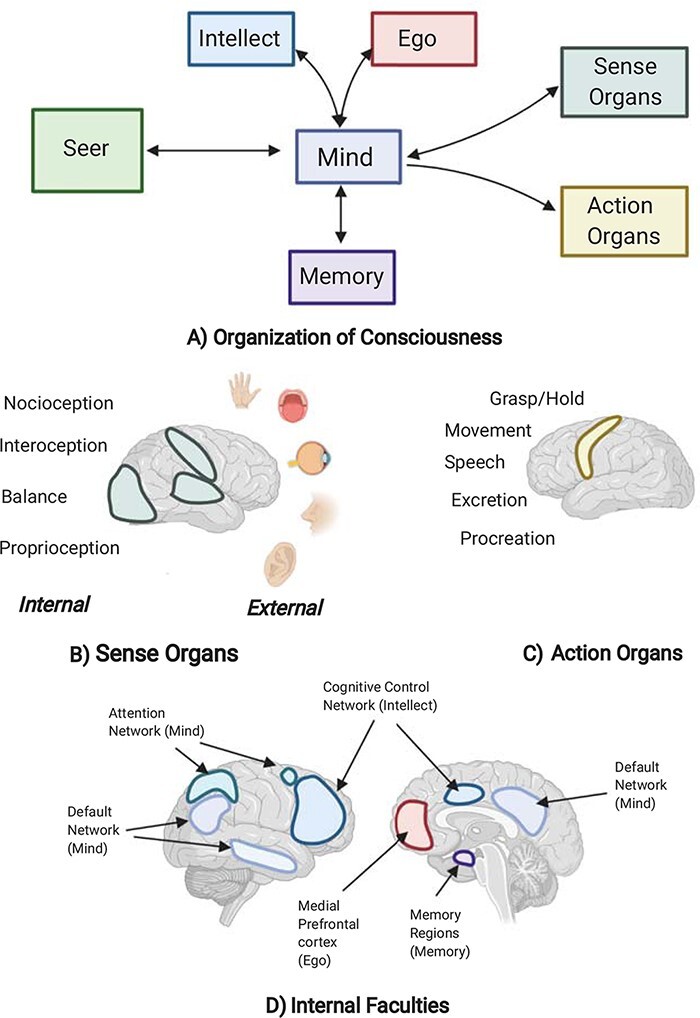Figure 1.

Yogic theory of mind and consciousness: A) The organization of consciousness according to YTC. Sense and action organs represent external faculties that enable interaction with the world. In this and subsequent figures, the direction of the arrows represents the flow of information or cause–effect relationship, the width of the connecting arrow depicts the strength of the connection, faded region and arrows represent a temporary reduction in activity and connection, respectively, and a broken arrow represents disconnection whereas red cross represents damaged physical connection. B) Sense organs comprise external senses like taste, touch, smell, sight and hearing, and internal senses like nociception (pain), proprioception, interoception and balance. Tanmatras or sensitivity and specificity of each sense organ is an internal property and not described in the figure here. Brain regions like occipital cortex are considered a part of the sense organ in the YTC, similarly for the somatosensory cortex, auditory cortex and olfactory region. C) Action organs of movement, hold/grasp/push, speech, excretion and procreation are represented in the motor cortex which is considered part of the action organs in YTC. D) Internal faculties of the intellect, ego and memory interact through the mind. The mind constitutes the default network and the attention network (not all regions of the networks are represented in the figure). The intellect is represented in the prefrontal cortex also called cognitive control network (which includes frontoparietal control network; not all regions are represented in the figure) and the ego (self-referencing) in the medial prefrontal cortex (mPFC). The hippocampus and amygdala are the regions associated with memory. All these faculties working in conjunction perceive, cognize, think, remember and act. Seer, separate from the others, is the centre for awareness.
